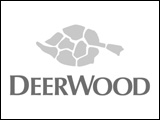Wheat breeders that used to search through binders of data can now make genetic comparisons with the click of a mouse, thanks to software developments and a gene mapping database funded by the Western Grains Research Foundation Endowment Fund.
Daryl Somers, Director of Applied Genomics at the Vineland Research and Innovation Centre in Vineland Station, Ontario, was working at Agriculture and Agri-Food Canada’s Cereal Research Centre in Winnipeg when he led the project. Dr. Somers collaborated on the project with a bioinformaticist, Travis Banks from the Agriculture and Agri-Food Canada Cereal Research Centre in Winnipeg.
“We were generating quite a lot of data related to DNA fingerprinting or plant genotyping. We were using that data to develop genetic maps of wheat and it occurred to me at the time that we didn’t have any great software tools to manage that data, or to give easier access to the data,” says Somers.
“We had a lot of hard copies of this information in many binders of paper in the lab. It was well organized, but when you needed a piece of information you had to get a binder down and have a look.”
Ag Canada had a bioinformatics specialist, Travis Banks, working in Winnipeg. Somers would present a concept or idea to Banks about a specific issue and Banks would develop software to fix it.
“In the human genetics field, there was a lot of research coming out on a topic called association mapping. It became clear in the plant world that we may be able to use association mapping to map traits to the genome. So part of the project included taking the wheat genome and attempting to create a genotyping allele database that would permit association mapping,” says Somers.
The project focused on hard red spring wheat and durum wheat, producing a reference database for wheat breeders. “It gives a whole genome fingerprint of wheat. You can tell one variety from the next very easily and you can tell what parts of the genome are different between the varieties. That’s how you start to create the associations,” he says.
“If one variety is tall vs short or early vs late, you may be able to distinguish why that is, based on these differences you find in the database. That’s the concept of association analysis.”
Some of software used in the project – TASSEL, developed at Cornell University and Structure -was free software for work in corn. Somers and Banks developed additional software, Map Archive Viewer or MAV. “It’s software that is graphical, that allows us to compare genetic maps, side by side. That’s an important feature. You have to be able to compare one map to the next,” he says.
“MAV has been used to archive maps, archive information behind the maps and do comparative mapping. It took well over two years to fine tune it, but it’s also useful for any crop species. We’ve given it to groups using it in rye, corn, barley, canola and I’ve even used it for grapes.”
“Now, sitting in front of the computer, technicians and scientists looking for a piece of data that would have taken 25 minutes looking through binders can click within seconds and find what they’re looking for. It created a lot more efficiency in map construction and map archiving.”
Plant breeders across Canada are now using the software to do association mapping. Somers says the durum breeder in Saskatoon has used the MAV to map out certain genes that affect semolina color, but also found other genomic regions based on association mapping, that controlled that trait.
The project produced a tool that other breeders now use in their breeding programs, that significantly changed the way they go about their daily work. They are now able to take graphical information out of the software in digital form and email it to other breeders. It’s much different than how they used to do it.
“We have had good success on both objectives. The MAV and related free software are used routinely and have been widely praised by both the domestic and international wheat communities. We continue to populate the MAV software with maps and microsatellite information. It’s the primary location to store all this critical information,” says Somers.
“The allele database is now complete and it will take a few years of analysis and expansion of both genotype and phenotype datasets to fully realize the potential of this resource. Early indications, using semolina colour, plant height and leaf rust resistance show association mapping is possible, which will enable researchers to discover genes controlling traits in an more efficient manner.”



